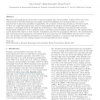Free Online Productivity Tools
i2Speak
i2Symbol
i2OCR
iTex2Img
iWeb2Print
iWeb2Shot
i2Type
iPdf2Split
iPdf2Merge
i2Bopomofo
i2Arabic
i2Style
i2Image
i2PDF
iLatex2Rtf
Sci2ools
AEOG
2015
2015
Using ontological inference and hierarchical matchmaking to overcome semantic heterogeneity in remote sensing-based biodiversity
Ontology-based applications hold promise in improving spatial data interoperability. In this work we use remote sensing-based biodiversity information and apply semantic formalisation and ontological inference to show improvements in data interoperability/comparability. The proposed methodology includes an observation-based, “bottom-up” engineering approach for remote sensing applications and gives a practical example of semantic mediation of geospatial products. We apply the methodology to three different nomenclatures used for remote sensing-based classification of two heathland nature conservation areas in Belgium and Germany. We analysed sensor nomenclatures with respect to their semantic formalisation and their bio-geographical differences. The results indicate that a hierarchical and transparent nomenclature is far more important for transferability than the sensor or study area. The inclusion of additional information, not necessarily belonging to a vegetation class desc...
| Added | 13 Apr 2016 |
| Updated | 13 Apr 2016 |
| Type | Journal |
| Year | 2015 |
| Where | AEOG |
| Authors | Simon Nieland, Birgit Kleinschmit, Michael Förster |
Comments (0)

